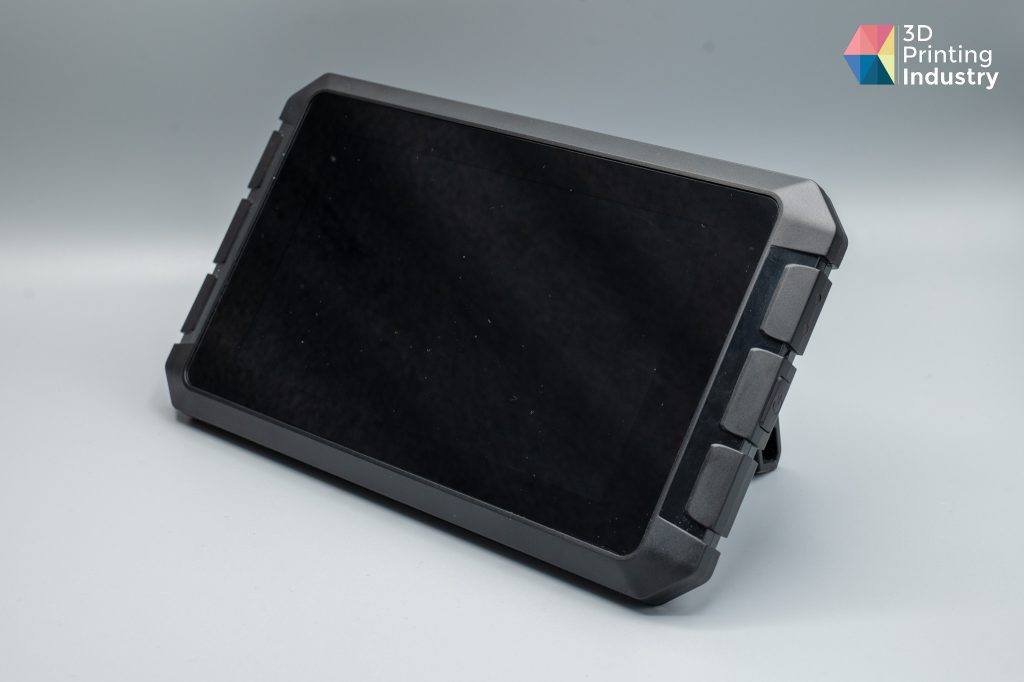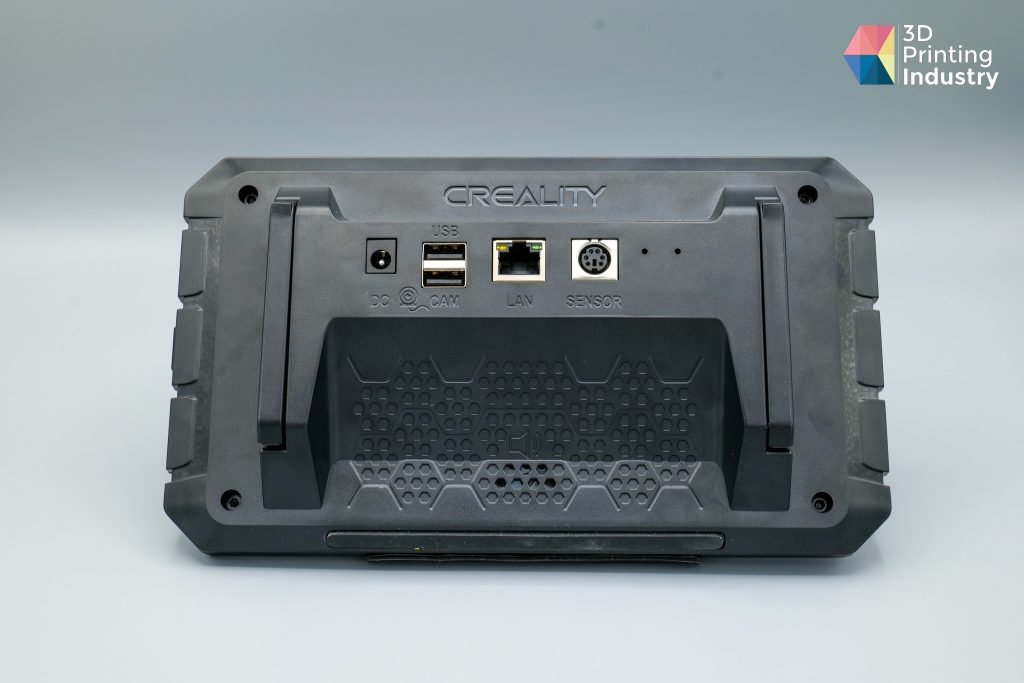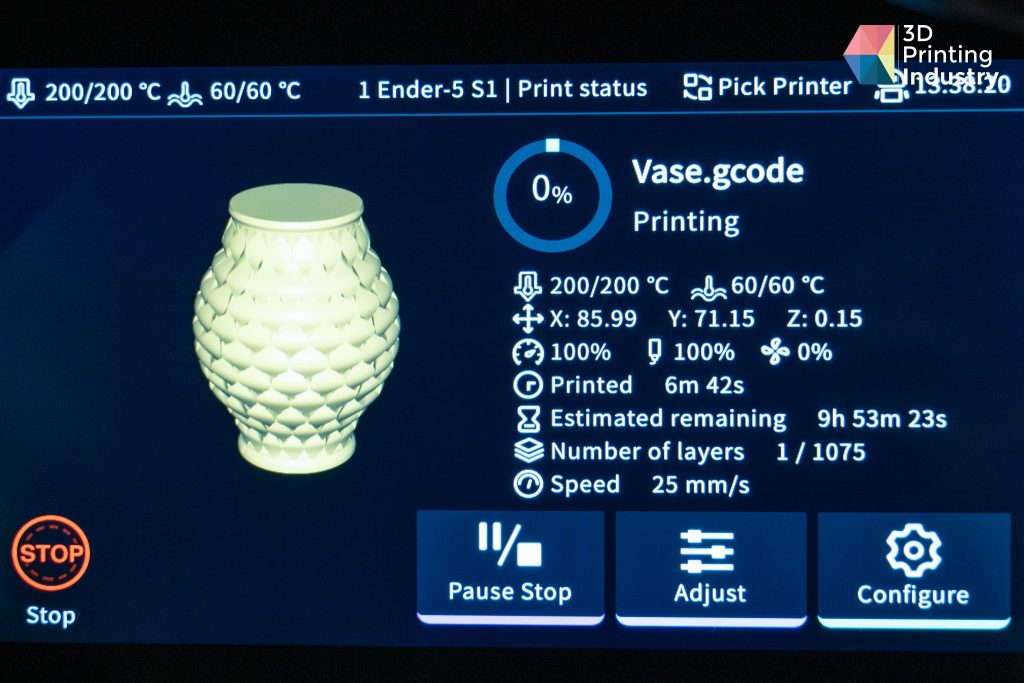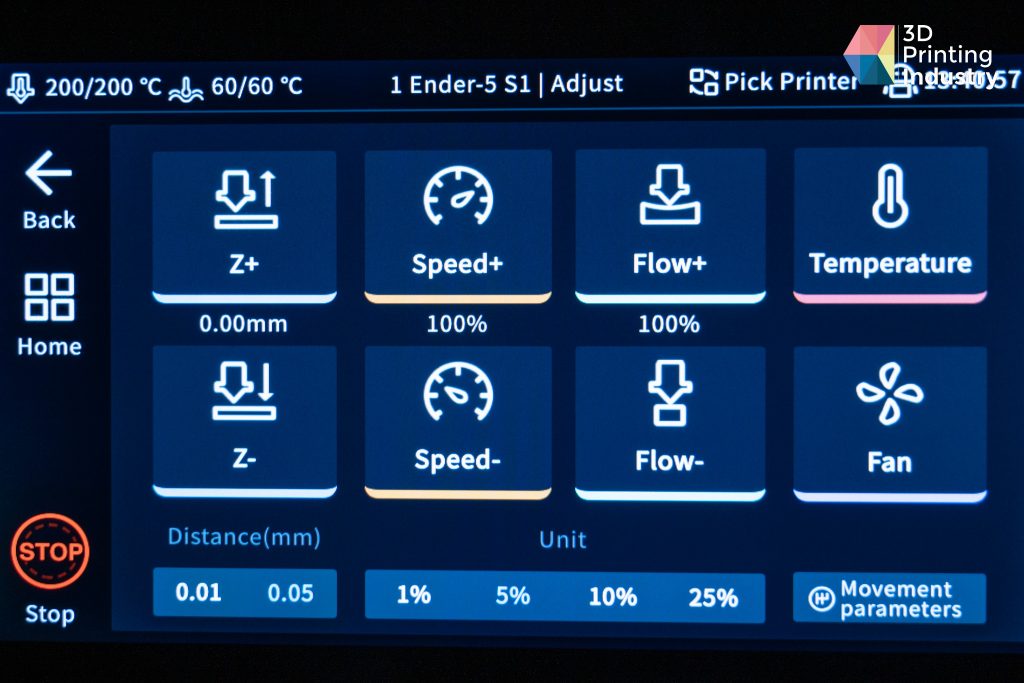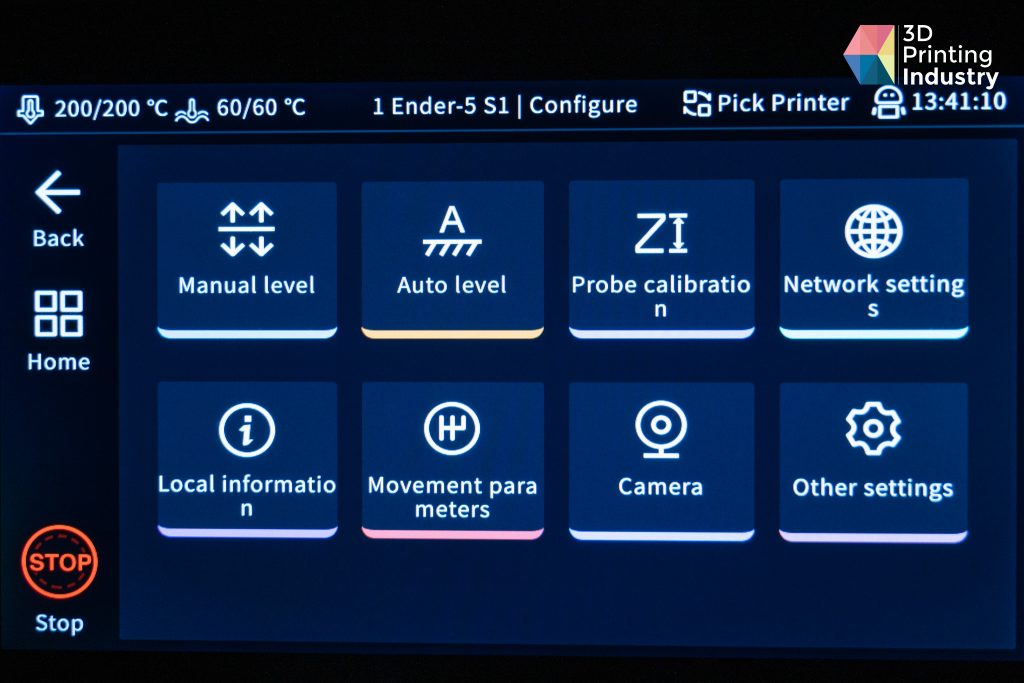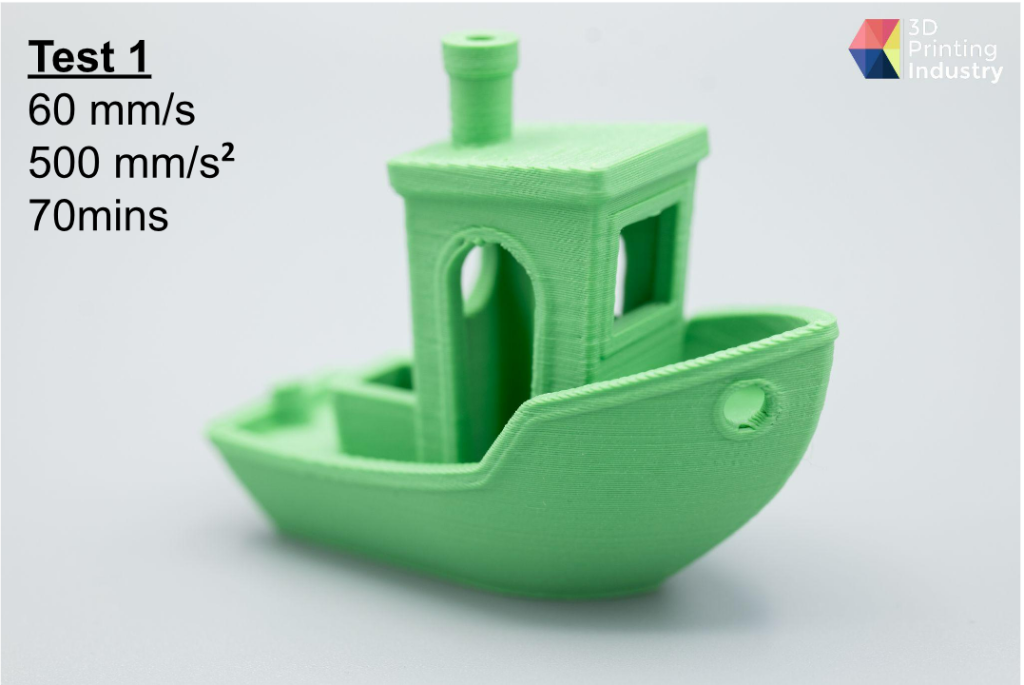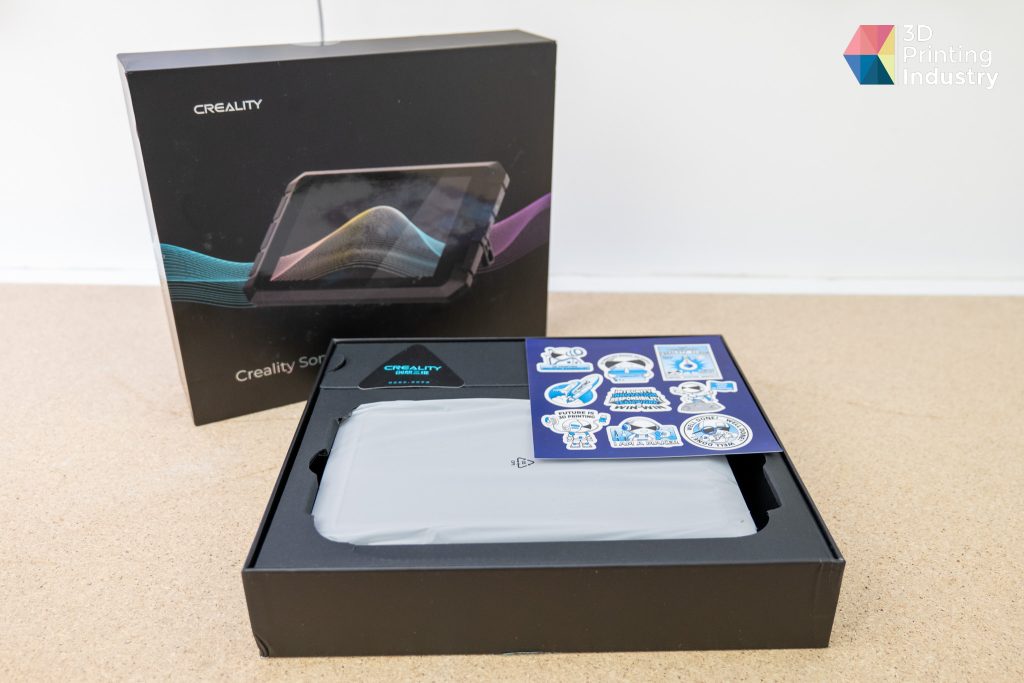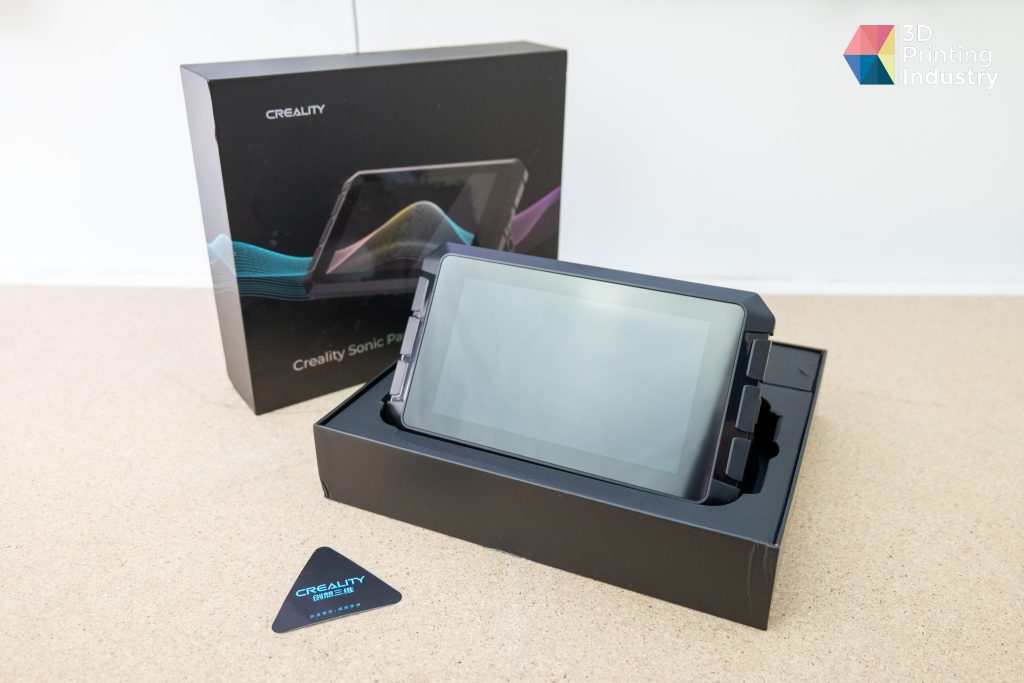3D Printing Industry reviews the Creality Sonic Pad.
Users looking to upgrade their 3D printing experience might be interested in the Creality Sonic Pad, an external control pad that can reduce the time to get 3D prints, improve user experience, and provide additional control options, making fine-tuning easier. Creality is a leading 3D printer manufacturer based in China, founded in 2014, and is committed to providing high-quality and affordable 3D printers for hobbyists, educators, professionals, and industrial users. In this review, we explore the main benefits and features of the Sonic Pad, as well as our own experience with it.
Creality Sonic Pad front and rear view. Photos by 3D Printing Industry.
What is the Creality Sonic Pad?
The Sonic Pad is a large tablet with a 7-inch touchscreen that runs Klipper firmware, it takes advantage of a powerful 64-bit computing platform to deliver stunning results. It allows the user to control and monitor their printer remotely, send 3D prints directly to multiple 3D printers, and enjoy faster 3D printing speeds without compromising quality.
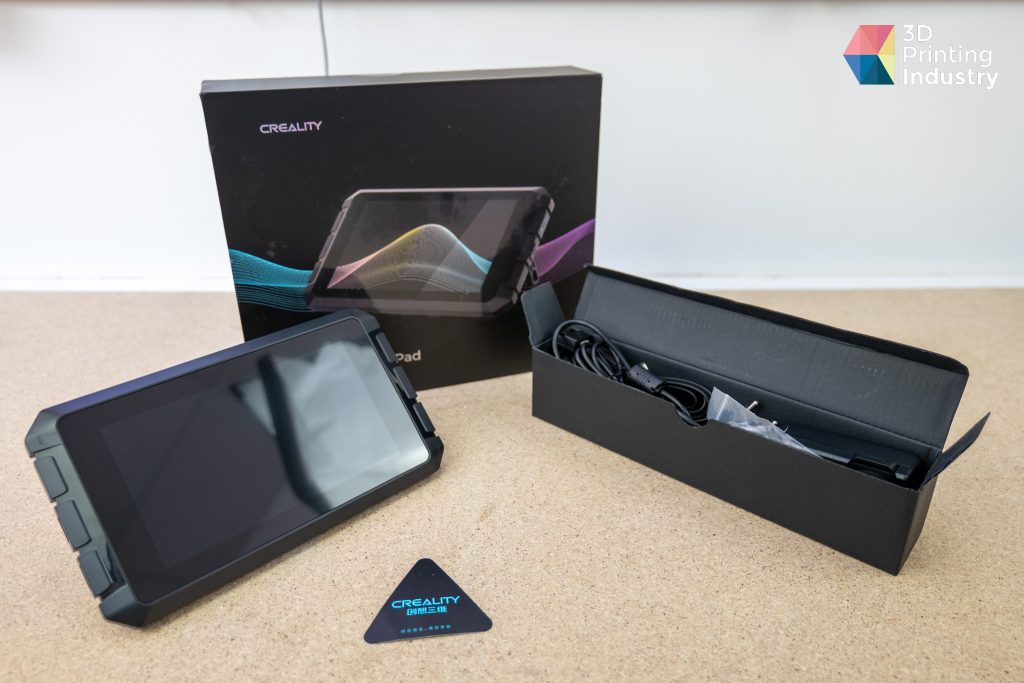
The Sonic Pad is designed for beginner and intermediate users who want an easy firmware upgrade and advanced users who want more control over their 3D printers and extra features, such as user-defined macros, rich extensible interfaces, and accessible open-source software. The Sonic Pad comes with a detailed manual and instructions, as well as pre-configured 3D printer setup files for most of Creality’s popular machines, making the setup quick and simple.
Faster 3D prints and Easier adjustments
One of the main advantages of the Sonic Pad is that it can improve 3D printing speeds on various 3D printers, including older machines, while maintaining the same level of quality resulting in faster 3D prints. The Sonic Pad does so through Klipper, an open-source firmware that can take advantage of a 64-bit computing platform inside the Sonic Pad that can handle complex calculations faster than the 8-bit or 32-bit boards on most 3D printers. This improved processing ability, in combination with functions such as input shaping, can mitigate oscillation during high-speed 3D printing, smooth out ringing, and help maintain model quality.
With improved motor control, the Sonic Pad overrides hardware limits on maximum speed and acceleration, resulting in faster 3D prints and time saved. All this can be fine-tuned and controlled from either the pad or remotely through a web interface.
Remote LAN Access to Multiple Connected Printers
Another great benefit of the Sonic Pad is that users can monitor and control their printer without getting up from their computer or any other compatible device. Users can use the web interface to operate their 3D printers away from the machine, such as adjusting settings, starting or stopping 3D prints, or checking the status. Users can also send prints directly to multiple 3D printers connected to one Sonic Pad, making it easy to manage multiple machines simultaneously.
Creality Sonic Pad user interface. Photos by 3D Printing Industry.
The Sonic Pad also supports remote viewing of 3D printers as it has camera support, and set up is simple. Users can monitor their 3D prints in real time or take time-lapse recordings to capture their print process. The Sonic Pad offers a variety of options to take time-lapse videos to the next level, such as controlling the extruder’s position whenever the frame is taken to create the effect of the 3D print growing out of the build plate.
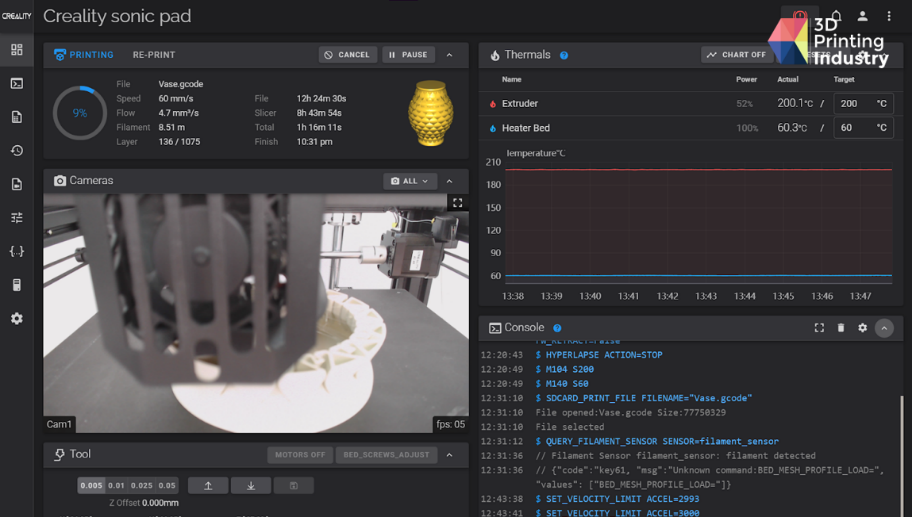
Setting up the Creality Sonic Pad
The Sonic Pad is designed to be easy and quick to set up and use. It has a detailed manual and instructions guiding the user through the installation and configuration process. Users can also find video tutorials on Creality’s official website or YouTube channel.
The pad comes with pre-configured printer setup files for most of Creality’s popular printers, so users don’t have to edit any code or settings manually. A user needs to select their printer model from the menu and follow the instructions on the screen. Sonic Pad will automatically apply appropriate parameters and optimal settings for Klipper firmware. Sonic Pad can also be set up for non-Creality 3D printers as long as they can support Klipper, and instructions for doing so are also available.
Testing the Creality Sonic Pad
We tested the Sonic Pad with an Ender-5 S1 printer, and we’ve generally had a positive experience with it. To test the speed, time saved, and print quality, we’ve 3D printed the widely known 3D printer benchmark called Benchy at a range of speeds and accelerations ranging from entry-level printer speeds of 60mm/s and accelerations of 500mm/s2 up to 250mm/s and 5000mm/s2 respectively which is what the Sonic Pad profile provides. The Benchy model was chosen due to its number of geometric features that test the capabilities of any given 3D printer and its clean look, making for an easier comparison.
The “Test 1” Benchy printed at 60mm/s and 500mm/s2 came out very well on our Ender-5 S1, but it took 1 hour and 10 minutes to print, which is fairly slow. We then printed a Benchy at 250mm/s and 5000mm/s2, one with no input shaping and one with an input shaping setup. While this reduced the print time to 32 minutes, less than half the time for the previous test, it has negatively impacted the print quality. While there isn’t much visible ringing on either of the models, surfaces, and corners, don’t look as sharp compared to the Benchy printed at slower settings. In addition, there were some cooling issues with overhangs, but from our testing, this is most apparent in this model and less in others.
Speed and quality tests. Photos by 3D Printing Industry.
So, while the Sonic Pad does allow users to save time on their 3D prints, there is a trade-off that potential users should be aware of.
We liked the UI on the Sonic Pad with an improved range of options. We enjoyed the convenience of controlling and monitoring our printer remotely from our laptop or smartphone and sending prints directly to the printer without using an SD card or a USB cable. We also liked that we could view the model preview on the screen before printing, which helped us check the model’s orientation, size, and position.
Remote viewing and time-lapse features were easy to set up, and we had a lot of fun creating videos of our prints. We were able to adjust the settings and options to suit our preferences and needs, such as setting the interval, trigger, resolution, and frame rate.
Customer Experience
Sonic Pad in the original packaging. Photos by 3D Printing Industry.
The Sonic Pad is packaged in a sturdy box to protect it from damage during shipping, similar to how most good-quality tablets are packaged. The box contains the Sonic Pad itself, a power adapter with four wall adapters, a USB to micro USB cable, an ADXL sensor with a cable, and a USB drive. The Sonic Pad is easy to set up and connect to your printer with a detailed setup guide and instructions available. Out of the box it will provide faster prints, but further configuration and fine-tuning is required to maintain the desired quality. To achieve this one would have to rely on 3rd party sources and documentation, which we feel should be included with the Sonic Pad.
Final thoughts from the Creality Sonic Pad review
The Creality Sonic Pad is a smart add-on for 3D printers that can enhance users’ 3D printing experience in many ways, though it may not be for everyone. It has some very good quality-of-life features such as remote control and remote viewing through a web interface, and it can reduce print times, at some cost to the print quality. It does provide easy Klipper firmware installation, but the preconfigured profiles do not take full advantage of what Klipper offers, resulting in the user having to do the extra work if they wish to see the full benefits. Sonic Pad would be an appealing option if one wishes to go the extra mile.
The Sonic Pad meets the advertised claims of easy setup and remote access. It is a great product for both beginner and intermediate users who want an improved interface with their 3D printers and advanced users who want more control over their 3D printers and extra features like controlling multiple machines.
Technical Specifications for the Creality Sonic Pad
| SoC | Creality T800 |
| SoC Data Bus Width | 64-bit |
| RAM | 2 GB |
| WiFi Standard | 802.11 b/g/n |
| USB Port | USB2.0 x 4 |
| LAN Port | RJ45 x 1(100Mbps) |
| Vibration Sensor Interface | 1 |
| RatedVoltage | 12V |
| Display Type | IPS |
| Display Size | 7 inches |
| Display Resolution | 1024*600 |
| Multi-touch | Yes |
| Speaker | Yes |
| Vibration Sensor | Yes |
| PackageDimensions | 282*241*55mm |
| Product Dimensions | 222*128*40mm |
| Net Weight | 0.46Kg |
| Gross Weight | 1.15Kg |
Subscribe to the 3D Printing Industry newsletter to ensure you keep up with the latest 3D printing news. You can also follow us on Twitter, like our Facebook page, and subscribe to the 3D Printing Industry Youtube channel to access more exclusive content.
Are you interested in working in the additive manufacturing industry? Visit 3D Printing Jobs to view a selection of available roles and kickstart your career.
Featured image shows the Sonic Pad. Photo by 3D Printing Industry.


